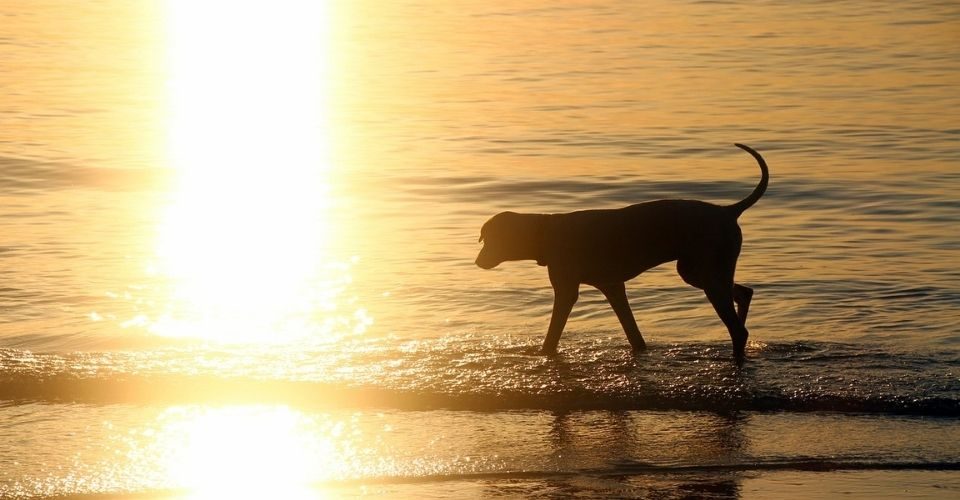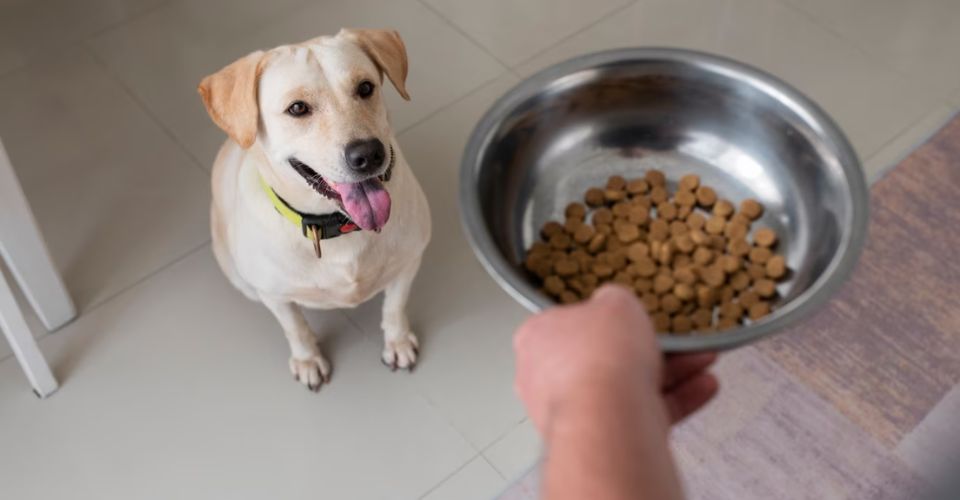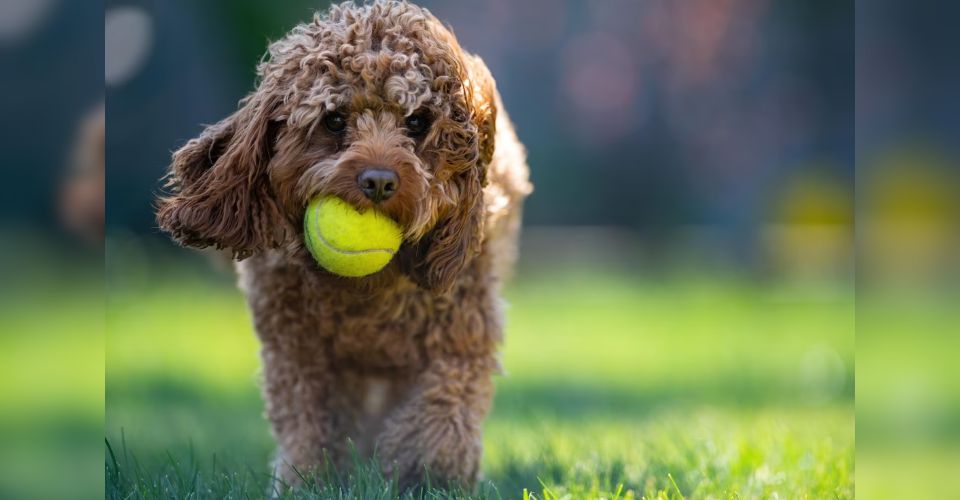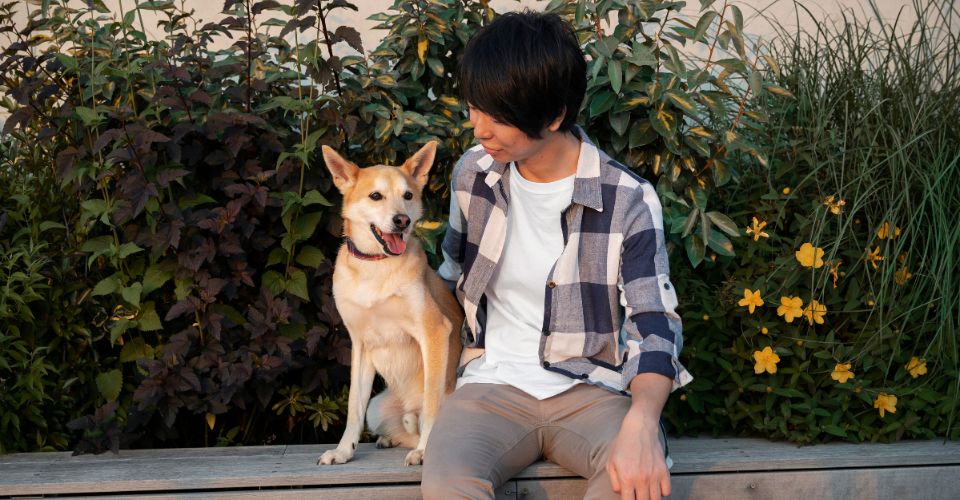Summers are here, so are your summer holidays.
You might have planned beach parties, lake visits, pool games, sunbaths, and other fun summer activities to relish this season to its fullest. And guess who is going to enjoy this time with you? Probably your puppy buddy.
That brings us to a serious topic: Puppies and their heat sensitivity.
Though heat can be uncomfortable for humans, dogs are even more sensitive to hot weather. As soon as the temperature rises above 104°F, your dog is at risk of having a heat stroke. If not prevented or treated immediately, it can be fatal for your dog. To prevent this, you should know how to cool down your puppy in hot weather so that you can enjoy your summer with your little friend as you have planned.
In this short guide, we will explain everything you should know about taking care of dogs in the summers.
A. Why Is a Puppy Sensitive to Summer Heat?
It is due to their furry coats and the fact that only their tongues can “sweat” —the reason why they pant all the time.
When our body heats up during summers, every pore of our skin starts to ooze sweat, thereby normalizing the temperature. Such a sweat system, however, is not present in puppies because there are no pores on their skin. The only way they cool their body down is through saliva. When dogs breathe and pant, the air outside cools down their saliva, which keeps their body temperature normalized.
An average dog’s body temperature ranges between 100.2° F and 102.8° F. When the temperature outside soars, their cooling mechanism is overwhelmed, and they start to pant hard, which is not usually enough to keep their whole body cool.
At 104°F, they can get heat cramps, dehydration, and hyperventilation. And at 106°F, a serious heat stroke occurs that can be fatal for a dog.
B. Common Puppy Heat Stroke Causes
1. Traveling With Dogs in Hot Cars During Summer
Dog overheating issues can occur for several reasons, the most common of which is traveling in hot cars. Since cars are made up of a material that gets heated easily, the temperature inside the car steadily increases when it is hot. Temperatures in a closed car can reach 120°F within minutes on a relatively mild 70-degree day. In such a situation, dogs can find it difficult to breathe, which causes health issues. This situation gets worse when the dog owner leaves the dog in a hot car for a while. Thus traveling in hot cars should be avoided to prevent heat issues.
2. Taking Dogs to Beach During Summer
Dogs love beaches as much as you do.
A whole sea of water, vast ground to play, soft sand to dig in their paws, and the company of his owner—they have got everything there. You can take your puppies or adult dogs to the beach; however, a temperature check and air humidity level should be checked before taking your dog.
Puppy heat stroking on a beach occurs often. Especially when those breeds that are prone to overheat are taken to the beach on a relatively hot day. As a responsible pet parent, you need to understand your dog’s response to different weathers. Plan your beach trips only if the weather suits your dog’s temperament.
3. Leashing Dogs in Hot Areas
That is actually shocking! You might be wondering who does that?
But it is never on purpose. Sometimes, when a dog owner leashes the dog in a shady outdoor area, he or she may forget that during the daytime, that place will not be the same cool place. Also, because of their busy schedules, owners sometimes forget to unchain their dogs at night too. This kind of heat exposure gives heat-strokes to their dogs.
4. Dog Overheating During Exercise in Summers
Most dog breeds are highly active and need exercises to release their pent-up energy, but engaging them in physical activity during hot sunny days can cause overheating or heat strokes. Even dogs that are bred for working in hot weather can suffer heatstroke if the work gets intensive.
5. Heat Exposure at Home
This issue is not prevalent in households having a cooling system. But where there is the unavailability of a cooling system, dogs can get heated and ultimately fall sick.
A backyard without shade or a fence that blocks cool breezes may make the dog’s environment much hotter than the indoor. Lastly, being exposed to blow dryers can also cause heat strokes.
C. How to cool down your puppy in hot weather?

The temperature sensitivity of puppies creates a difficulty for dog owners to cherish the summer season. They can’t go on walking because the sidewalks are piping hot; they can’t play in the yard because the air is hot; and they can’t go out on long drives because the car is hot.
Due to their susceptibility to overheating, you need to know how to cool down your puppy to prevent severe repercussions.
1. Bathing Puppy

The best way to decrease the body heat of your dog is by bathing him. During the sweltering summers, you can give him a bath daily. Don’t use shampoo or soaps often as it can reap away natural oils of dogs—causing hair fall, dander, and itchy skin.
When returning from hot weather outside, avoid bathing your pooch immediately. If your dog is already warm, giving him a sudden cold bath can cause more problems for him. Take time to normalize his body temperature first.
2. Puppy Pools
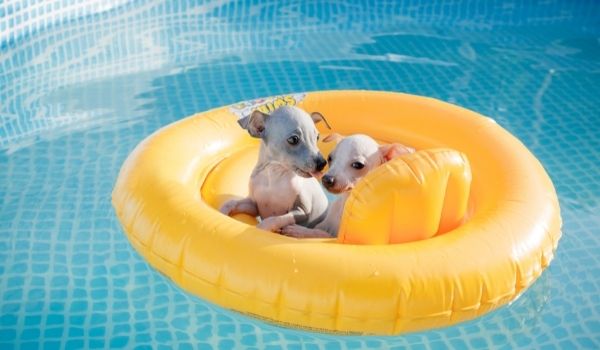
Dogs don’t like bathing, but they enjoy playing in the water.
Breeds like Golden Retrievers, Labradors, and Poodles love to swim and play all day long in your pools.
On the contrary, there are also breeds such as Pugs, Basset Hound, Boxer, and Pekingese that can’t swim, thanks to their body sizes. If you have any of these dogs, bring them to the puppy pool and let them have fun with water.
3. Water Sports
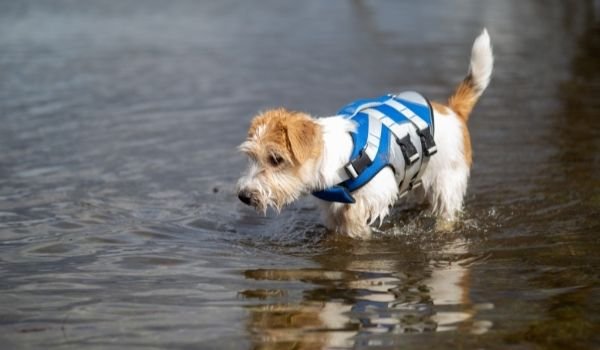
Other than giving them cold baths, you can also engage your dogs in water sports.
If you are planning your vacay to a beach or lake, water sports will help him relieve from heat.
Such sports include:
4. Dog Ice Creams
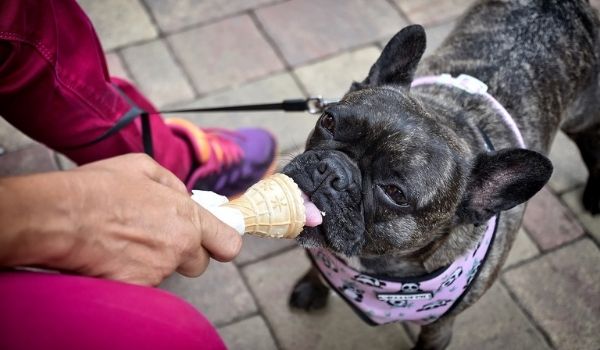
Ice creams! Yes, they help too. However, be careful about the ingredients. For instance, basic ingredients like milk, sugar, and cream are not toxic for dogs, but ice-creams with chocolate are not recommended.
You can try the following flavors to hit the sweet tooth of your pooch.
- Peanut Butter
- Cinnamon
- Coconut
- Banana
- Carob Chips ( Alternative to Chocolate)
- Pumpkin
5. Homemade Chilled Popsicles for Dogs

If you want to feed your dog with healthy chilled treats without chemical sweeteners, you can try making popsicles at home.
Fill ice cube trays with one of the following, place icy-pole sticks in the center, and freeze.
- Low-Salt Chicken Broth
- Canned Pumpkin
- Xylitol-Free Peanut Butter and Mashed Banana
- Fruit Mixed With Plain Low-Fat Yogurt
You can also change the shapes by filling in glass, cups, etc.
D. Signs Your Puppy Has a Heat Stroke
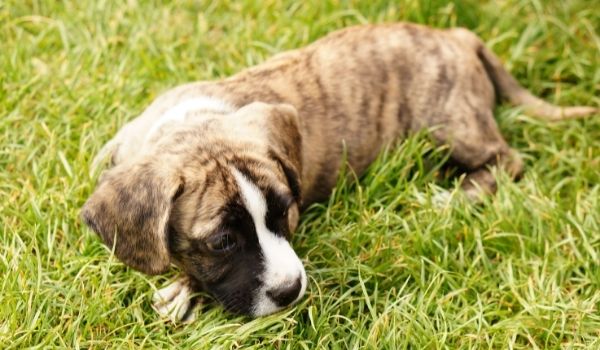
Now that you know about why your dog might get strokes, you might be wondering how to know if a dog has a heat stroke.
- Heavy Panting
- Hyperventilation—Deep and Rapid Breathing
- Vomiting
- Dry or Sticky Gums
- Abnormal Gum or Tongue Color (Gingival Discoloration)
- Gum Bruising
- Increased Pulse and Heartbeat
- Lethargic
- High Body Temperature
- Frequent Drooling
- Disoriented and Stumbled Gait
- Seizures
If your dog is exhibiting any of the above symptoms, consult your vet immediately.
E. How to Keep Your Dog Safe During Summer
Prevention is the best cure, as they say.
Being a responsible parent, you must know how much heat your dog can endure. To prevent serious health conditions, here are a few tips to keep your dog from getting overheated.
- Keep your dog hydrated.
- Don’t leave your dog in a hot car.
- Avoid overexertion on your dogs in hot weather.
- Provide your dog with shades and chilled summer foods during excursions.
- Limit their outdoor activities.
- Keep underage puppies, senior dogs, or canines with overheating and respiratory issues indoors.
- Limit outdoor trips of your dog on extremely hot or humid days.
Best and Worst Dog Breeds for Summers
The canine world has a variety of dogs with different characteristics.
Some breeds can play all day while others can’t play much; some breeds can swim while others can’t; similarly, some can tolerate sizzling summers up to an extent, while others not so much.
The following dog breeds list can help you find the right dog for your summer home.
5 Dog Breeds That Can Tolerate Summer Heat
Sun heat isn’t what all dog breeds can handle. The breeds that can do so mostly belong to the working, hunting, and guarding categories, as they have been built to be tough and to stand harsh conditions.
German Shorthaired Pointer (GSP)
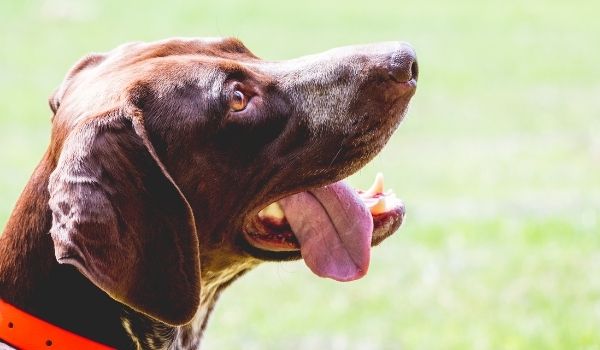
Developed for hunting in hot weather, GSPs are strong and have an athletic physique. They have a muscular, arched neck, sturdy hindquarters, and firm forelegs that help them run smoothly. The physical feature that makes GSPs more adaptable to the summer season is their coat. They have an evenly distributed, fine-haired smooth coat due to which their body temperature doesn’t rise. Additionally, they have long pointed muzzles that increase their breathability, helping them normalize their body temperature.
These factors together help them endure the intensity of the sunlight, enabling them to run in long moors and chase their hunt.
Saluki

Also known as Arabic Hound, Gazelle Hound, and Persian Greyhound, the Salukis were purebred in the Middle East for sight hunting. They have been used to hunt gazelle, fox, hare, and jackals. As they have the ability to reach their targets in the piercing hot sands of the Middle East, these dogs can endure the summer heat painlessly.
American Foxhound
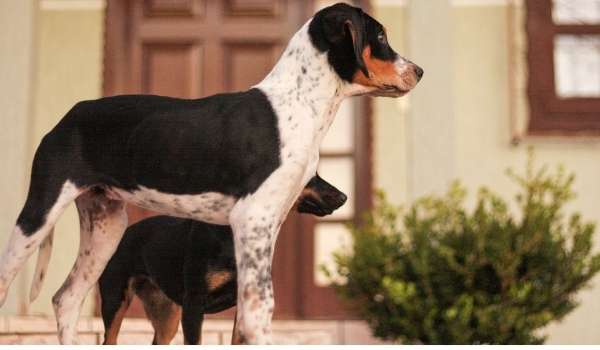
The American Foxhound is another breed on the list that can keep up with summer heat. Originating from pure hunting dogs, Foxhounds possesses all the qualities that make an exceptional hound. What distinguishes them from other canines is that they have a short and smooth coat, held tight to their skin. Their coat’s hard and sturdy texture protects them from bruising and brushings in the hunting field.
Airedale Terrier
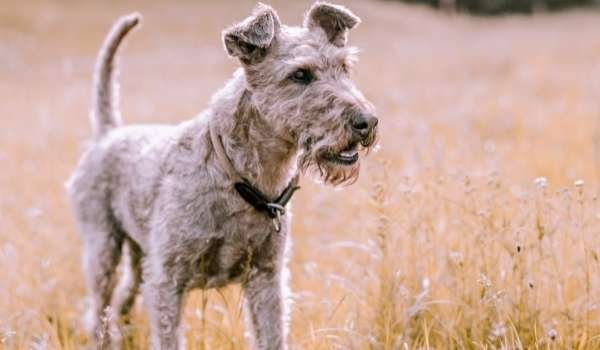
Owing to their relatively huge size than other Terriers, Airedales are termed as “kings of the terriers”.
They have double coats, and you might construe them as winter dogs, but nature has designed them in such a way that it protects them from the harshness of both summers and winters. They can be perfect beach buddies for you; once being there, they’d not bother you at all as they’d be busy enjoying the summer heat and water waves.
Great Dane
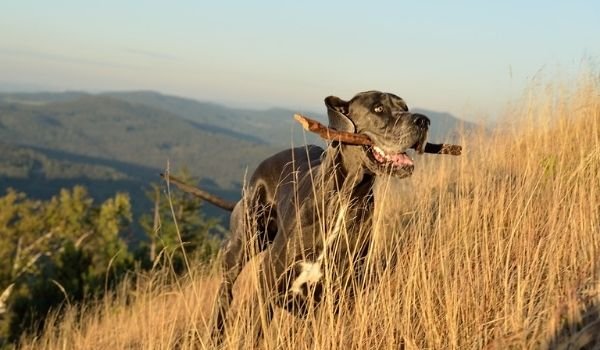
The massive body of the Great Dane makes him aggressive and formidable. But this is, in fact, not true; Great Danes are friendly, calm-tempered, and dependable. Above all, you’d be happy to know that they can easily withstand heat. They have a huge snout and a wide muzzle that boosts their breathability. But the main feature of Great Danes is their short and smooth coat that keeps their body temperature normal.
Though the breeds listed above aren’t sensitive to summer, that doesn’t mean they should be roaming around the yard in the sun.
5 Dog Breeds That Can’t Tolerate Summer Heat
Not all dogs are built to be tough; some are developed just to provide company to their owners and take away their loneliness and stress. Dogs of such breeds are delicate and sensitive and consequently cannot sustain scorching heat.
However, some giant outdoor dog breeds belonging to protection or hunting groups can’t bear the summer heat. It is primarily an issue with dogs that have brachycephalic faces.
Such dogs may have hard-bitten bodies, but they have trouble breathing in hot weather because of their short snout. As mentioned earlier, dogs can only cool themselves off through breathing, so the fact that these flat-faced dogs cannot breathe in hot weather makes them unsuitable for higher temperatures.
Chow Chow
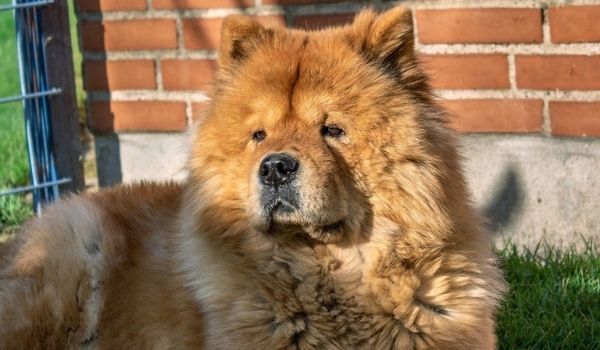
Bewitched by their extra-furry skin and happy face, almost every dog lover wants to have a Chow Chow.
As the name indicates, Chow Chow comes from a Chinese background. Known for their dense coats, this breed is known to have a thicker neck area, giving the appearance of a lion.
These dogs were developed solely for colder regions. It is dangerous to keep them in a warm environment as their coats heat up rapidly, making them pant heavily and ultimately causing faintness, heat exhaustion, or in some circumstances, even death.
But still, if you really want to have a Chow Chow, then prepare a fully air-conditioned room and don’t let him out when the temperatures are high.
Bulldogs
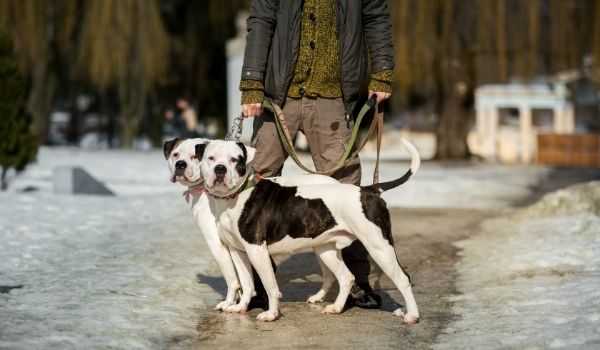
Next on the list is Bulldogs.
You might be wondering why?
The answer is their flat brachycephalic faces.
Brachycephaly is the shape in which the skull is comparatively shorter from the front than the normal skull structure. Because of this, they have a shorter airway which causes trouble breathing if the temperatures are soaring.
Also, bulldogs were developed for cold weather; thus, if you live in warm areas and have a bulldog, keep them indoors during summer.
French Bulldogs
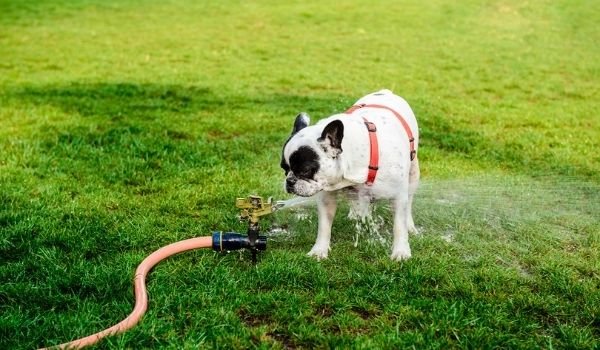
Much like their ancestors—Bulldogs—French Bulldogs can’t survive the heat. With their flat faces and short snouts, they have difficulty breathing. Hence, they cannot cool themselves off as quickly as needed.
Secondly, they have very sensitive skin. Even if they are breathing fine, their skin gets heated, leading to heat strokes or heat exhaustion. When overheated, they pant heavily, the color of their tongue changing from pink to blue, which indicates the shortage of oxygen.
Health problems aside, a French Bulldog is a real crowd-pleaser. You might want to have him but make sure you can take care of him in the summer.
Dogue de Bordeaux
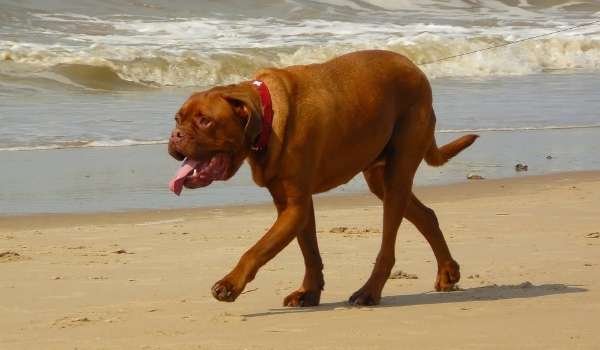
Bordeaux Mastiff, Dogue de Bordeaux, or French Mastiff have a similar appearance to that of Bulldogs.
The average height of a French Mastiff is 60–67 cm, and they weigh around 54–65 kg. These dogs are known to have the most prominent head as compared to other breeds in the canine world. They have low energy levels, and their exercise requirements are minimal. So, if you have a busy lifestyle, this dog is perfect for you.
However, if you are expecting him to accompany you on a hike on a sunny day, that’s actually would be harmful to your dog. Why? Because of their flat face and sensitive skin.
Greyhounds
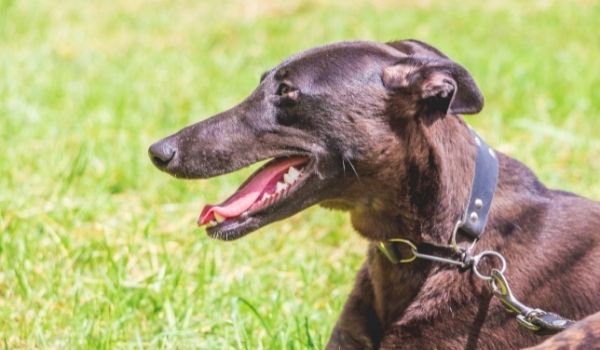
The appearance of Greyhounds is similar to that of Salukis. However, when it comes to skin sensitivity, Salukis are tougher than Greyhounds.
These canines were bred for hunting in the cold areas of Eastern Europe. Thus, their survival in hot regions is a bit difficult. Greyhounds have sun-reactive skin, and frequent exposure to sunlight can cause skin allergies, sunburns, and overheating issues.
If you have to take them out, you must use sunscreen.
Why can a puppy be sensitive to the summer heat? How to cool down your puppy in hot weather? And which breeds are and aren’t best for summers? Hope now you know the answers!

